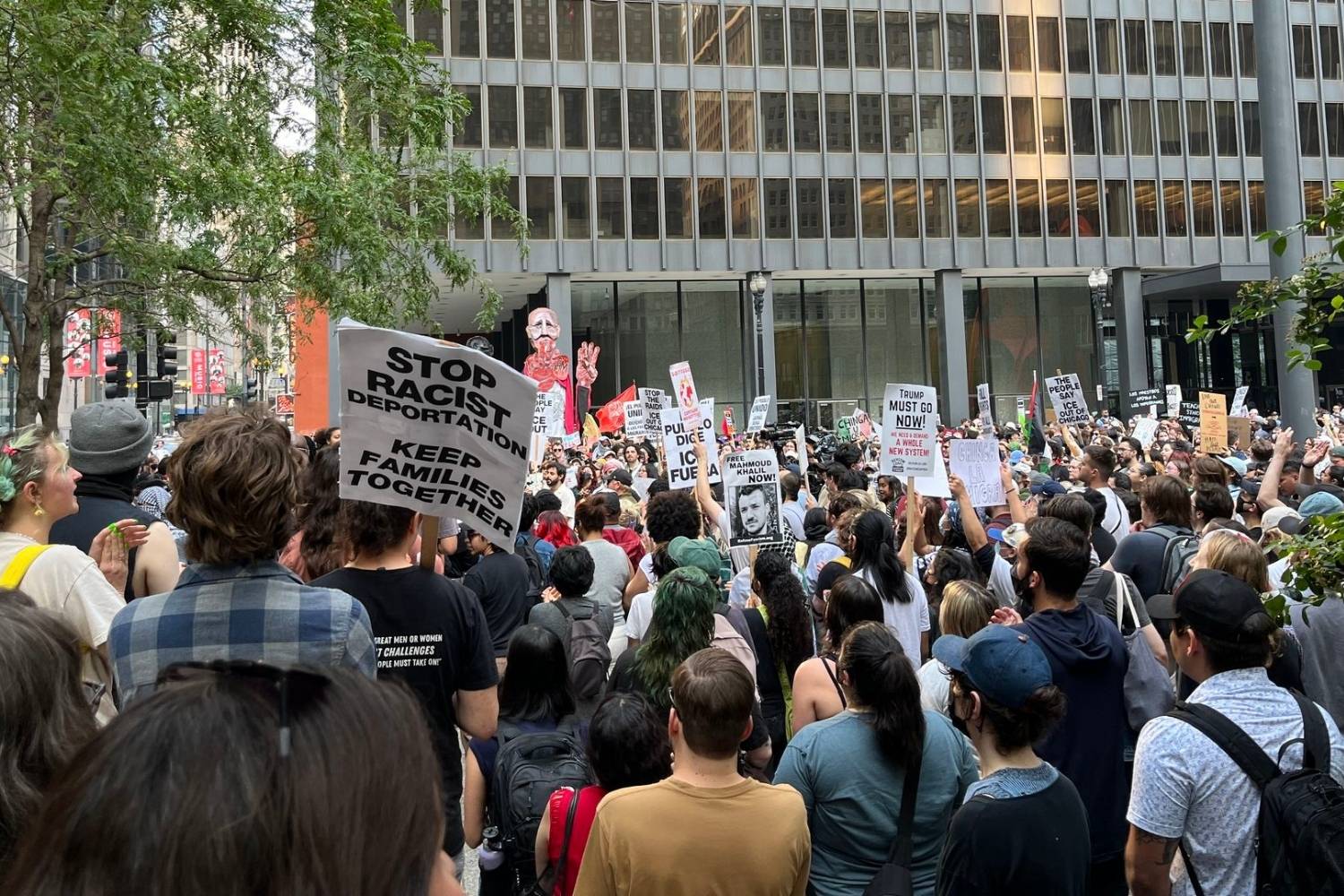
Chicago protests have a rich history, reflecting the city's vibrant spirit and commitment to social change. From labor strikes in the 19th century to modern-day movements, Chicago has always been a hub for activism. Why does Chicago see so many protests? Chicago's diverse population and its role as a major urban center make it a focal point for various social issues. The city's residents are passionate about their beliefs, often taking to the streets to demand justice and equality. Whether it's fighting for workers' rights, racial equality, or political reform, Chicagoans are never afraid to make their voices heard. This tradition of protest is deeply woven into the fabric of the city, making it a powerful symbol of resistance and hope.
Chicago Protests: A Historical Overview
Chicago has a rich history of protests, reflecting its diverse and politically active population. From labor movements to civil rights marches, the city has seen it all. Here are some fascinating facts about Chicago protests that highlight their significance and impact.
-
Haymarket Affair (1886)
The Haymarket Affair is one of the most infamous labor protests in American history. It began as a peaceful rally in support of workers striking for an eight-hour workday. However, it turned violent when a bomb was thrown at police, resulting in the deaths of several officers and civilians. This event had a lasting impact on labor movements worldwide. -
1968 Democratic National Convention Protests
During the 1968 Democratic National Convention, Chicago became a battleground for anti-Vietnam War protesters and police. The clashes were broadcast on national television, shocking viewers and highlighting the deep divisions within the country. The phrase "The whole world is watching" became synonymous with the event. -
Chicago Freedom Movement (1965-1967)
Led by Dr. Martin Luther King Jr. and the Southern Christian Leadership Conference, the Chicago Freedom Movement aimed to address issues of housing discrimination and economic injustice. The movement marked one of the first major civil rights campaigns in the northern United States.
Modern-Day Protests in Chicago
Chicago continues to be a hub for activism and social change. Recent protests have focused on issues such as police brutality, immigration, and economic inequality. Here are some key moments from recent years.
-
Laquan McDonald Protests (2014-2015)
The shooting of 17-year-old Laquan McDonald by a Chicago police officer sparked widespread protests. The release of dashcam footage showing McDonald being shot 16 times led to calls for police reform and greater accountability. The protests resulted in the firing of the police superintendent and the indictment of the officer involved. -
Women's March (2017)
In January 2017, Chicago hosted one of the largest Women's Marches in the country, with an estimated 250,000 participants. The march was part of a nationwide movement advocating for women's rights, healthcare, and social justice. It showcased the city's commitment to gender equality and activism. -
George Floyd Protests (2020)
Following the murder of George Floyd in Minneapolis, Chicago saw massive protests demanding an end to police brutality and systemic racism. Thousands of people took to the streets, leading to significant policy changes, including the establishment of a civilian oversight board for the police department.
Impact of Chicago Protests on Legislation
Protests in Chicago have often led to significant legislative changes, reflecting the power of collective action. Here are some examples of how protests have shaped laws and policies.
-
Fair Housing Act (1968)
The Chicago Freedom Movement played a crucial role in the passage of the Fair Housing Act of 1968. The act aimed to eliminate housing discrimination based on race, religion, national origin, and later, gender. It was a significant victory for civil rights activists and set a precedent for future anti-discrimination laws. -
Police Accountability Reforms
Protests following the Laquan McDonald shooting led to several police accountability reforms in Chicago. These included the creation of the Civilian Office of Police Accountability (COPA) and the implementation of body cameras for all police officers. These measures aimed to increase transparency and rebuild trust between the police and the community.
Chicago Protests: A Snapshot
Chicago's protests have a rich history of driving change and raising awareness. From the 1968 Democratic National Convention to the Black Lives Matter movement, these events have shaped the city's social and political landscape. Protests in Chicago often highlight issues like racial inequality, police brutality, and workers' rights. The city's diverse population brings a variety of voices and perspectives to the forefront, making each protest unique and impactful.
Understanding the history and significance of these protests helps us appreciate the ongoing struggle for justice and equality. It also reminds us of the power of collective action and the importance of standing up for what we believe in. Whether you're a Chicago resident or just interested in social movements, knowing these facts can provide valuable insights into the city's dynamic and ever-evolving story.
Was this page helpful?
Our commitment to delivering trustworthy and engaging content is at the heart of what we do. Each fact on our site is contributed by real users like you, bringing a wealth of diverse insights and information. To ensure the highest standards of accuracy and reliability, our dedicated editors meticulously review each submission. This process guarantees that the facts we share are not only fascinating but also credible. Trust in our commitment to quality and authenticity as you explore and learn with us.
